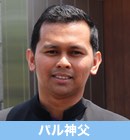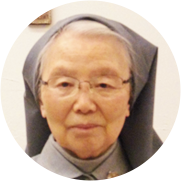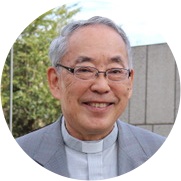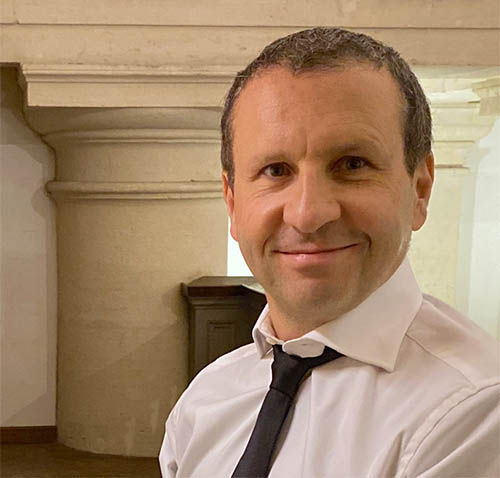お知らせ
私たちの体は自分自身の歴史を語っている
2019年06月24日

私は「キリストの聖体」の主日を祝うときはいつも、自分自身の体の大切さを思い出させられます。かつてルネサンス時代の偉大な哲学者は、我々は「体を持っているだけでなく」、実際は「体そのものである」と言っています。私たちの体は私たちが誰であるかを語っています。体は私たちが誰になれるかを明らかにしています。
人生のすべての段階において、私たちは体の変化を経験してきました。母親の子宮に宿っていたとき、私たちの体は子宮の液体の空間に漂う小さな生き物のようでした。私たちが生まれたとき、私たちの体は速くて、あわただしい新しい環境に適応するためにたいへんな努力をしなければなりませんでした。適応すればするほど、私たちの体は成長し成熟していきます。やがて転がり、ハイハイし、立ちあがり始め、そして歩き、走るようになります。そうする中で、体のどこかをドアや窓のかど、家具や柵などにぶつけたりするような出来事に出会います。そんな出来事は体に傷を生じさせますが、それらは子供のときの楽しみや歴史を語っています。子供時代の記憶はいつも覚えておく価値があるものです。
しかしながら同時に、私たちの体が災難や災害、戦争によっていかに打ちのめされたかを語る悲しい物語もあります。とりわけ、私は長崎原爆資料館に行ったとき、まさに目の前に現われた光景にショックを受けました。私は、焼けた数多くの老若の体、瞬間的に輝かしい未来を失い灰と化した子供の体を写したたくさんの写真を見ました。
私がほとんど言葉を失ったのは母親と1歳にも満たない男の子の写真でした。致命的で極めて有害な化学物質を伴う原子爆弾が長崎に命中した後、体にやけどを負った母親と男の子はまだ授乳することができました。母親は男の子に授乳していました。それは最後の授乳でした。男の子にとっても最後でした。2、3分後、二人とも亡くなりました。それは母親の最後の授乳でした。男の子にとっては母親からもらった最後のお乳でした。この出来事はまさに母親と男の子の絆がいかに強いかを教えてくれます。
イエスもまたイエスをはりつけにした人々の手で十字架上の苦しみを受けました。イエスの血と打ち傷に覆われた体は、イエスが己を空しくするシンボルとしてご自分の体を差し出されたことを思い起こさせます。イエスは私たちを罪の力から救うために神である身をへりくだって、私たちと同じようになられました。イエスは私たちがイエス自身となるように私たちと同じようになられました。
今日、イエスのはりつけにされた体はパンとぶどう酒の形、ご聖体として祭壇に捧げられています。今日の祝日は、私たちの体と私たちは一つであり全体であることを思い起こさせます。私たちの体は、私たちが所有している車のような私たちの所有物ではありません。私たちの体はまさに私たち自身です。私たちは「体を持っているのではなく、まさに体である」のです。私たち自身が体であることで、傷として自分の体に埋められ、刻み込まれている過去の自分の歴史を記憶することができるのです。あなたのどんな傷跡でも、それはあなたの人生の歴史を物語っています。キリストの聖体の主日に私たちが自分の体を愛し、体を自分自身として扱いますように。しかしまた私たちは、他人の命を助けるためには自分の体を犠牲にしなければならない時がきたら、十字架上のキリストのように喜んで自分の体を委ねなければなりません。物
パル神父
Our body retells our own history.
I am reminded whenever we celebrate the feast of the “Body of Christ” about the significance of our own bodies. A great Renaissance Philosopher once said, “we do not only have our bodies,” in fact, “we are our own bodies.” Our body tells us who we are. It defines us who we can become.
In every stage of our life, we underwent change as well as in our bodies. When we were conceived in our mother’s womb, our bodies seemed like a tiny creature floating in a space bounty of fluid inside the uterus. When we were born, our bodies had to exert a great effort to adapt to a new environment-the fast, rush, outside world. The more it adapts, the more our body grows and become mature. Then we started roll, crawl, climb then walk and run. Along the way, we met accidents like hitting some parts of our bodies to doors, edges of windows, furniture, barriers and many more. Such incidents create scars in our bodies, which tell our childhood fun and history. Childhood memories are always worth to remember.
However, there are also sad stories that narrate how our bodies were devastated by catastrophe, disasters, and war. Particularly, when I went to Nagasaki bomb museum, I was caught shocked of what just appeared in front of my eyes. I saw many photos depicting how many bodies were burnt, young and old, bodies turned to ash of children who lost as early as that moment their bright future.
One that almost left me speechless was a photo of a mother and her less than a year-old son. After the nuclear bomb hit Nagasaki with its deadly and extremely harmful chemicals, the mother and son, having burnt parts of their bodies, were still able to do breast-feeding. The mother breastfed her son. That was her last. That was the son’s last. After a few minutes, both are said to have died. It was the last breastfed she could give to her son; as well as the son’s last milk he received from his mother. Yet, amidst what just happened they taught us how strong mother and son tie was.
Jesus too in his form at the cross, suffered under the hands of those who crucified him. His body clothed with blood and bruise recalls how he offered his body a symbol of self-emptying. He emptied or humbled himself as a God and become like us in order to save us from the power of sin. He became like us so that we become his own.
Today that crucified body has been offered at the altar in a form of bread and wine, the Holy Eucharist. In this feast, we are reminded that our body and we are one and whole. It is not our possession like the car we perhaps own; it is rather our self. It is not “having a body; it is rather BEING a body.” Being our own bodies, we are held to remember what our history in the past embedded and engrave in our bodies in a form of scars. Whatever mark or scar you have, it tells a history of your life. In this feast of the Holy Body of Christ, may we love our body and treat it as our person. But we must also be ready to surrender our body like Jesus in the cross, when the time came we have to sacrifice it so that another one’s life be saved.
Father Pal
- お知らせ
-






